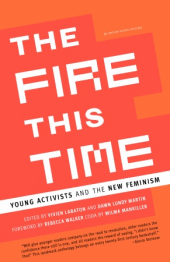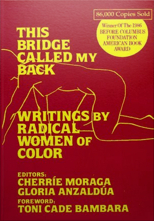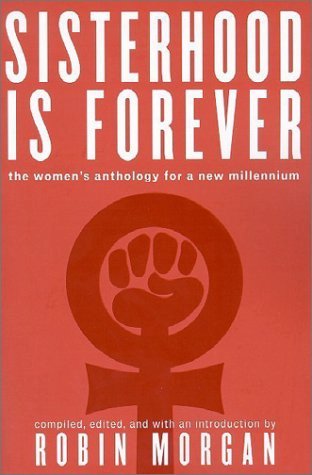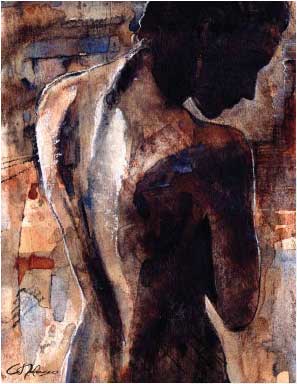|
|
Toronto Website Design & Toronto SEO
Flight of the Filipina Phoenix:
The Rise of Pinay Feminism


By Mel Castillo - 2007.
Where have all the Filipina feminists gone?
Since Korean-American and Vietnamese-American scholars such as Laura Hyun Yi Kim and Trinh T. Minh-Ha are significant voices for many Asian American feminists, it is surprising how relatively invisible their Filipina American and Canadian counterparts are in the movement. This lack of visibility is exasperated by the fact that many Filipina feminists have made significant contributions to women’s activism in the developed world, in addition to addressing issues of poverty, social injustice, and violence within the Philippines.
As the diversity of North American feminism is often categorized under the umbrella of the third wave, many writers and theorists have failed to encompass the unique plight of Filipina feminists within the mainstream movement. According to Heywood and Drake (1997), the third wave is broadly defined as “a movement that contains elements of second wave critique of beauty culture, sexual abuse, and power structure while it also acknowledges and makes use of the pleasures, danger, and defining powers of those structures” (p. 3).

While one may interpret this definition to be inclusive to all women of diverse races, cultures, sexual orientation, socio-economic status, and religions, one must literally look at the writing on the wall to discover the contrary. If a young Filipina feminist were to leaf through groundbreaking publications such as The Fire this Time: Young Activists and the New Feminism, This Bridge Called My Back: Writings of Radical Women of Colour, Sisterhood is Forever: The Women’s Anthology For a New Millenium, and To Be Real: Telling the Truth and Changing the Face of Feminism, she would not find another Filipina voice among this sea of feminist literature.
In response to this blatant marginalization, Filipinas from around the world have created their own spaces, organizations, and publications in order for their feminist voices to be heard. De Jesus (2005) refers to peminism, or Filipino American-centred feminism as the “gendered analysis of imperial trauma—the Philippines’ dual colonization by Spain and the United States and the articulation of Pinay [Filipina] resistance to imperialism’s lingering effects: colonial mentality, deracination, and self-alienation” (p. 6).
Similarly, the Philippine Women Centre of British Columbia has a complementary Canadian ethos which aims to “[p]romote awareness by Filipino women of their common interests, issues, and problems as women of an ethnic minority living in Canada; [h]elp foster feminist values from the perspective of Philippine women, [and] encourage inter-cultural understanding with women from other ethnic communities” (Philippine Women Centre of BC website, 2007, para. 2). In order to come to a clearer understanding of Filipina American and Canadian-centred feminisms, this paper aims to explore how the seeds of Pinay agency have been sowed to resist oppressive colonial and post-colonial legacies, while demonstrating how layers of structural discrimination have shaped peminist activism within North America.
The patriarchal foundation of Philippine culture is a consequence of nearly four centuries of Spanish colonialism between the early 16th and late 19th Centuries (Philippine History website, 2006, para. 1). Prior to Spain’s occupation, Indigenous women in the Philippines shared an egalitarian relationship with their male counterparts and even played a significant role in the spiritual arena in which women could achieve high priestess, or babaylan, status (Wall, 1998, para. 11). According to Wall (1998): [Indigenous women] received equal inheritance, were given training on par with men, enjoyed the same rights as in the right to divorce, had the same succession rights as men for political leadership, were involved in managing not just the domestic economy but also the agricultural domain… And, it was fertility, not virginity, that was valued in that society. (para. 11).

Once Spanish colonizers started successfully indoctrinating Indigenous peoples into Roman Catholicism, patriarchal priviledge would eventually come at the cost of female oppression (Wall, 1998, para. 12). As a result, Filipinas would endure nearly half a millenium of subordination, violence, sexual brutality, and physical commodification at the hands of both domestic and foreign oppressors (Wall, 1998, para. 13).
However, colonialism would not kill the will of Filipino women to fight for their rights. In the 18th Century, Gabriela Silang would become the first documented female freedom fighter to resist the Spanish occupation of the city of Vigan in the Illokandia region (“Joan of Arc of Ilocandia,” 2003, para. 1). After her husband and famous rebel fighter, Diego Silang, became slayed shortly after victoriously liberating Vigan , Silang took the reigns as the rebellions commander-in-chief (“Joan of Arc of Ilocandia,” 2003, para. 6). Silang would later be driven out of Vigan by Spanish forces, however, she would use the city of Pidigan as her army’s new headquarters where she would eventually wage a series of guerilla attacks against her opposition (“Joan of Arc of Ilocandia,” 2003, para. 8). While waging the battle of her life in order to recapture Vigan City, Silang and her troops were eventually outnumbered by the Spanish garrisons (“Joan of Arc of Ilocandia,” 2003, para. 10). On September 20, 1763, Silang was publicly hanged at the hands of her Spanish oppressors (“Joan of Arc of Ilocandia,” 2003, para. 13). Not surprisingly, Gabriela Silang has become a symbol of Filipina strength, virtue, and tenacity in the face of great adversity. Even the GABRIELA (General Assembly Binding Women for Reforms, Integrity, Equality, Leadership, and Action) Network, the Philippine-United States women’s organization premised on the solidarity and empowerment of Filipino women, borrowed it’s name from Silang (GABRIELA Network website, 2007, para. 1). Therefore, Gabriela Silang has become the first of many Filipina feminists to vehemently resist their unchosen fate as colonial slaves.
Nearly two centuries later, Filipino women were continuing to aggressively use their agency in order to liberate themselves from their patriarchal prisons. By the 1970s, hope for women’s liberation in the Philippines was looking bleak under Ferdinand Marcos’ oppressive fascist regime (Tibe-Bonifacio, 2003, p. 71). During his twenty-one year term, Marcos formed strong ties with the five American presidents of his tenure which contributed to the United State’s strong hand in Philippine foreign policy (Kessler, 1986, p. 5). At the same time, Kessler (1986) argues that the corrupt leader embezzled more than a billion dollars from the Philippine sugar industry which directly contributed to the $25 billion debt the nation had incurred during his tenure (p. 5). To make matters worse, the notorious dictator enacted the Philippines into a state of martial law which violated the civil liberties of Filipino citizens (Taguiwalo, 2005, p. 7). According to Tibe-Bonifacio (2003), this era of political instability would ignite the forces of Filipina activism that would jumpstart a new era of Pinay empowerment (p. 71).
In 1970, Filipina feminsts started organizing themselves into a large political unit called the Malayang Kilusang ng Bagong Kababaihan, or the “free movement of new women” (Taguiwalo, 2005, p. 4). The organization called itself MAKIBAKA for short, which aptly meant “struggle” in the Tagalog dialect (Taguiwalo, 2005, p. 4-5). According to Taguiwalo (2005), MAKIBAKA emerged as an offshoot of Kabataang Makabayan (KM), a radical youth group which called for extreme reforms in the Philippine political system (p. 3). Since KM was deeply entrenched in Marxist and nationalistic values, such reforms called for the curtailing of bureaucratic capitalism within the Philippines and the end of American feudalism and imperialism within the country (Taguiwalo, 2005, p. 2). While the formation of MAKIBAKA was also inspired by the Second Wave movement of the West, the politics of Philippine feminism were drastically different (Tibe-Bonifacio, 2003, p. 72). North America’s Second Wavers sought women’s equality in regards to labour practices and education, while championing the sexual and reproductive rights of all women (Tibe-Bonifacio, 2003, p.72). In contrast, the voices of Filipina feminism echoed the anti-imperialist and anti-fascist cries of their radical subsidiaries, while protesting the atrocities inflicted specifically on Filipino women such as sexual trafficking, domestic violence, and other forms of systemic oppression (Taguiwalo, 2005, p. 4). This unique model of Filipina activism would shape peminist theory and politics for generations to come. Having created its own political platform, MAKIBAKA would wreak havoc on the Philippines’ stubborn patriarchy.
Prior to Marcos’ call for martial rule, MAKIBAKA became a powerful force for Filipina agency and spreading social awareness within the Philippines (Taguiwalo, 2005, p. 3). According to Taguiwalo (2005), the women’s group would champion the rights of local farmers, participate in a series of labour strikes, and encourage the reproductive health and wellness among impoverished women by setting-up clinics and nurseries within major Philippine centres (p. 7). Not only would MAKIBAKA stage the first all-women’s demonstration in protest of a local beauty pageant, the group would also organize the first International Women’s Day celebration in Manila which involved the Women’s March Against Poverty on March 8th, 1971 (Taguiwalo, 2007, p. 7). As a testimony of Marcos’ cruel regime, many MAKIBAKA activists even became victims of organized kidnapping, rape, and murder as a consequence of their politics (Choy, 2005, para. 2). While MAKIBAKA would later fracture into various underground women’s organizations following Marcos’ martial rule, the group was successful in planting the values of Filipina feminism into the Philippine’s oppressive consciousness (Tibe-Bonifacio, 2003, p. 71).
As large numbers of Filipina professionals began to migrate west in order to cease North American opportunities, new waves of Filipina feminism have struggled to emerge from this mass exodus (Choy, 2005, para. 5). While both Canada and the United States have been involved in a series of prolific women’s movements, the merits of Filipina activism have often fallen below the radar of the West’s mainstream feminisms. De Jesus (2005) refers to mainstream feminism in North America as “hegemonic, white liberal feminism” which serves to perpetuate the Imperial power structure of the supposedly inferior Filipinos and their superior American wards (p. 8). Significantly, Tolentino (1996) contends that the systemic oppression of Filipino women within North America is further perpetuated by the colonial appropriation of the Filipina body within the international sex trade and the proliferation of mail-order brides marrying White American men (p. 2). To put the scale of the mail-order bride phenomenon into perspective, over 50, 000 Filipino women have moved to the United States within the last ten years, while 19,000 Filipinas migrate out of the Philippines annually as mail-order brides (Tolentine, 1996, p. 2).
At the same time, Anzaldua and Moraga (1983) argue that “white middle class women emerge among feminist ranks as the greatest propagators of racism in the movement” because of their inherent power as members of the dominant race and generally high socioeconomic status within the United States (p. 62). When addressing this discrimination within America’s women’s movement, Lorde (1979) reveals, “It is a particular academic arrogance to assume any discussions of feminist theory in this time and in this place without examining our many differences, and without a significant input from poor women, black and third world women, and lesbians” (p. 98). Clearly, North America was in dire need of Filipina-centred feminisms that would reflect the feelings of invisibility, alienation, indignation, healing, and resistance relevant to the Filipina American and Canadian experience (De Jesus, 2005, p. 7).
In addition to coming to terms with their marginalization as women of colour within North America, Filipina feminists have had to balance their clashing identities as colonized Filipinos and modern-day Americans and Canadians (Pierce, 2005, p. 31). According to Pierce (2005), “Being a Filipina American, or Pinay, means being colonized—first by Spain and then by the United States—and although you may not have been alive or present during the process of colonization, you experience the fall-out nonetheless” (p. 31). As one of the “fall-outs” of Philippine colonization, Filipina Americans often have to contend with the racist ideologies of their own parents who perceive all Caucasians as being immoral and disrespectful characters who are the antithesis of what Filipino daughters should strive to become (Espiritu, 2001, p. 9). Espiritu (2001) argues, “Within the context of the dominant culture's pervasive hypersexualization of Filipinas, the construction of the "ideal" Filipina—as family-oriented and chaste—can be read as an effort to reclaim the morality of the community” (p. 14). Consequently, this deep-seeded racism becomes problematic for Filipina feminists who must balance their own ideals regarding sexuality, morality, and politics with that of their families’ conservative ideologies.

Another point of contention for many Filipina Canadians and Americans is growing up in an environment in which females are generally perceived as inferior to their male counterparts. As women within patriarchal immigrant families are often seen as “keepers of the culture,” parents often exercise strict control over their daughters’ affairs in regards to dating and at times, monitoring their every move (Espiritu, 2005, p. 13-14). In sharp contrast, sons within the same families are treated with greater leniency and are not subject to the same restraints as their sisters (Espiritu, 2005, p. 14). Espiritu (2005) reveals that some Filipino parents even go as far as restricting their daughters’ from pursuing university opportunities outside of their hometowns in order to ensure their “safety” (p. 18). By controlling their daughter’s mobility and autonomy, many traditional Filipino parents perpetuate the cult of Filipina womanhood which has permeated the Pinay identity since the dawn of Spanish colonialism (Espiritu, 2005, p. 18). In turn, Filipina feminists within both North America and the Philippines have sought to reclaim the integrity of Pinays as strong and independent women who are in control of their own destinies.
Complicating matters even more is the extreme homophobia plaguing Filipino culture. While the protagonists of many Tagalog comedies are often cross-dressing anti-heroes, these homosexual caricatures are usually played by heterosexual actors who are reinforcing the strong and macho ideals of the Filipino male (Kenny, n. d., p, 8). Needless to say, coming out as a lesbian within this conservative setting would be a difficult undertaking. According to Cantor (2000), “Women who love women still face discrimination in Catholicism-dominant Philippines, and the lesbian movement has been fighting this discrimination since the 1980s alongside their heterosexual feminist counterparts” (para. 2). A 27 year-old, Filipina American lesbian documented in Cantor’s (2000) article, “My Personal, Your Political, Our Lesbianism,” describes how her family immediately dismissed her lesbianism as that of an “adolescent phase” that she would just grow out of (para. 18). Yet another Pinay lesbian reveals how her extremely conservative parents threatened to pull her out of the university she was attending in order to prevent further homosexual interludes (Cantor, 2000, para. 18). While these two isolated instances cannot reflect the responses of all Filipino parents, one can infer that coming out as a Pinay lesbian can be a very trying and complicated experience in much the same way it is for those under similar circumstances. At the same time, the prevalent homophobia within Filipino communities provides a further impetus for the emergence of unique peminist agendas within North America.
|
|
|
|
|
By the 1980s and early 1990s, Filipina American and Canadian women began to create their own political spaces in which they could use their agency to reinforce solidarity and empowerment within Pinay communities, while spreading awareness of the human rights abuses occurring within the Philippines. In the United States, the GABRIELA Network is the largest Filipina feminist network within the country as it houses more than 200 global women’s groups under its umbrella organization (“About GABNet,” 2007, para. 1). According to the network’s manifesta, “[W]e have focused our efforts on organizing, educating, networking, and advocating around the issues of sex trafficking, globalization, militarism, labor export and other structural adjustment programs imposed by international finance agencies like the International Monetary Fund and the World Bank” (“About GABNet,” 2007, para. 4).
Additionally, the GABRIELA Network also publishes the quarterly newsletter called kaWOMENan, which means “women’s collectiveness” (“About kaWOMENan Quarterly News,” 2007, para. 1). This independent news network is an invaluable source for Pinay activism as it provides an unfiltered medium in which Filipina feminists can keep the public informed about the social injustices occurring in the Philippines, while giving these women a platform in which their voices can be heard. For instance, one of kaWOMENan’s issues documents the physical and sexual torture of Angelina Bisuna Ipong, a 60 year-old peace activist who was illegally imprisoned under the fascist regime of President Gloria Macapagal Arroya (Ipong, 2005, p. 8). Another one of the newsletters exposes the threats of the American government to deport 300, 000 illegal Filipino immigrants as a retaliatory measure in response to the Philippines pulling its troops out of Iraq (kaWOMENan, 2004, p. 1-2). Therefore, both the GABRIELA Network and kaWOMENan reflect the conviction of Filipina American feminists as agents of political change who have contributed greatly to the empowerment of other Pinays, while protesting the human rights violations experienced by Filipinos from around the world.
In Canada, Filipina feminism also thrives. The National Alliance of Philippine Women (PWC) in Canada is an umbrella organization that houses the Philippine Women’s Centres of British Columbia, Manitoba, Ontario, Quebec, as well as the Pinay sa Montreal, also known as the “Filipina in Montreal.” Since each individual PWC chapter share similar goals, only the British Columbia subsidiary will be discussed in further detail. In turn, the PWC of British Columbia “aims to empower Filipino women to understand and collectively struggle for their rights and welfare as workers, migrants, immigrants, mothers, women of colour and low-income earners” (PWC of BC website, para. 6, 2007). Significantly, this Filipina collective also provides other Pinays with services involving youth empowerment, immigration, legal aid, family law, and co-op housing, in addition to conducting extensive research on areas such as human trafficking, the sex trade, and violence against women (PWC of BC website, para. 11).
Like the GABRIELA Network, the PWC of British Columbia has an online sister publication of the same name which exposes the injustices experienced by Filipinos globally while providing a forum for Filipina Canadian voices. Recent issues have exposed the physical and sexual abuses experienced by Filipinas working within Canada’s Live-in Caregiver Program, have advocated the accreditation of Filipino immigrants with professional degrees received in the Philippines, and have revealed the detrimental effects of systemic racism on Filipino Canadian youth (PWC of BC e-zine, 2007). In turn, the Philippine Centre of British Columbia, along with all of its subsidiaries, has promoted the activism and empowerment of Filipina Canadian feminists, while championing the rights of marginalized Filipinos globally.
To conclude, Filipina feminism is alive and thriving. By exploring the implications of the Philippines’ colonial past, one can see the inextricable correlation between the country’s dark imperial history and the emergence of the unique Filipina feminist agenda. While Gabriela Silang and the MAKIBAKA movement have inspired the conviction of Pinay feminism within North America, the politics of Filipina Canadians and Americans have also been shaped by their role as the Other within these societies. Not only have North America’s feminisms left them on the sidelines of their movements, Pinays in these neighbouring countries have had to contend with the marginalization experienced within their jobs, schools, and relationships. At the same time, Filipina peminists have also had to wrestle with complicated identity conflicts, and have had to reclaim their sense of self from that of the “Pinay cult of true womanhood.” However, as history reveals, Filipinas are fighters. Like majestic phoenixes, Filipina feminists have risen from the ashes of colonialism, oppressive dictatorships, racism, sexism, sexual exploitation, rape, and violence. And in the future, they will only continue to rise.
References
Anzaldua, G., & Moraga, C. (Eds.). (1983). And when you leave, take your pictures with you: Racism in the women’s movement. This Bridge Called My Back: Writings of Radical Women of Colour. New York: Kitchen Table Press. Reprinted by the University of Victoria Print Services for Women’s Studies 336 for Winter Session 2007.
Chow, E. N. (September 1987). The development of feminist consciousness among Asian American Women. Gender and Society, 1(3), 284-299. Retrieved from JSTOR database on April 1st, 2007 from, http://links.jstor.org/sici?sici=08912432%28198709%291%3A3%3C284%3ATDOFCA%3E2.0.CO%3B2-3
De Jesus, M. (Ed). (2005). Identity and decolonization. Pinay Power: Peminist Critical Theory. New York: Routledge Press. Retrieved from Google Scholar on April 5th, 2007 from, http://books.google.com/books?id=VIOV7gSVGnsC&printsec=frontcover&dq= nay+power:+peminist+critical+theory#PPR7,M1
Drake, J. and Heywood, L. (1997). Introduction. Third Wave Agenda: Being Feminist, Doing Feminism, 1-19. Minneapolis: University of Minnesota Press.
Espiritu, Y. L. (Winter 2001). We don't sleep around like white girls do: Family, culture, and gender in Filipina American lives. Signs, 26(2), 415-440. Retrieved from JSTOR database on March 28th, 2007 from, http://links.jstor.org/sici?sici=0097 9740%28200124%2926%3A2%3C415%3A%22DSALW%3E2.0.CO%3B2-S
GABRIELA Network Website. Retrieved on March 30th, 2007 from http://www.gabnet.org/
Joan of arc of Ilocandia. (2003). Retrieved from the Ilocos website on April 5th, 2007 from, http://www.santa.gov.ph/ilocossur/herogabriela.html
kaWOMENan. (Summer 2004). Retrieved from GABRIELA Network website on March 30th, 2007 from, http://www.gabnet.org/publicationsresources/kawomenan/2004/kawomen%20summer%202004.pdf
Kenny, J. F. (n.d.). Tagalog movies and identity: Portrayals of the Filipino self. Retrieved on April 10th, 2007 from, http://sunzi1.lib.hku.hk/hkjo/view/8/800083.pdf
Kessler, R. J. (Summer 1986). Marcos and the Americans. Foreign Policy, 1(63), 40-57. Retrieved from JSTOR database on April 10th, 2007, from, http://www.jstor.org/cgibin/jstor/printpage/00157228/ap040063/04a00030/0.pdf backcontext=page&dowhat=Acrobat&config=jstor&userID=8e68c80b@uvic.ca/ 1cc9933137e80111e98a6e31&0.pdf
Ipong, A. B. (Summer 2005). kaWOMENan. Retrieved from GABRIELA Network website on March 30th, 2007 from, http://www.gabnet.org/publicationsresources/kawomenan/2005/kawomenan%20summer%202005.pdf
Lorde, A. (1979). The master’s tools will never dismantle the master’s house. G. Anzadua, & C. Moraga (Eds.). Reprinted in This Bridge Called My Back: Writings of Radical Women of Colour. New York: Kitchen Table Press. Reprinted by the University of Victoria Print Services for Women’s Studies 336 for Winter Session 2007.
Philippine history—Spanish colonialism. (2006). Retrieved from Philippine history website on April 7th, 2007 from, http://www.philippinecountry.com/philippine_history/spanish_colonization.html
Philippine women centre of British Columbia website. (2007). Retrieved on March 30th, 2007 from, http://kalayaancentre.net/pwcofbc/
Pierce, L. M. (2005). Not just my closet: Exposing familial, cultural, and imperial skeletons. M. De Jesus (Ed). Pinay Power: Peminist Critical Theory. New York: Routledge Press. Retrieved from Google Scholar on April 5th, 2007 from, http://books.google.com/books?id=VIOV7gSVGnsC&printsec=frontcover&dq= inay+power:+peminist+critical+theory#PPR7,M1
Taguiwalo, J. M. (2005). The women of the first quarter storm of 1970: Women fully engaged with the making of history. Presentation from the Department of Women and Development Studies, University of the Philippines, Quezon City, Philippines. Retrieved on April 5th, 2007 from, http://www.upd.edu.ph/~cswcd/webpages/DOCUMENTS/facultypublications/PUBLICATIONS_TAGUIW01.pdf
Tibe-Bonifacio, G. L. (2003). Filipino women and their citizenship in Australia: In search of political space. Doctoral thesis from University of Wollongong, Australia. Retrieved on March 30th, 2007 from, http://www.library.uow.edu.au/adt-NWU/uploads/approved/adt NWU20041222.122054/public/02Whole.pdf
Tolentino, R. B. (1996). Bodies, letters, catalogs: Filipinas in transnational space. Social Text, 48, 49-76. Retrieved from JSTOR database on April 5th, 2007 from, http://links.jstor.org/sici?sici=0164-2472%28199623%290%3A48%3C49%3ABLCFIT%3E2.0.CO%3B2-A
Wall, D. R. (1998). Feminism and spirituality like a breath of fresh air: A Filipino Benedictine sister speaks of total liberation. Kasama, 12(2). Retrieved from the Solidarity Philippines Australia Network website on March 30th, 2007 from, http://cpcabrisbane.org/Kasama/1998/V12n2/Maryjohn.htm
|
|






